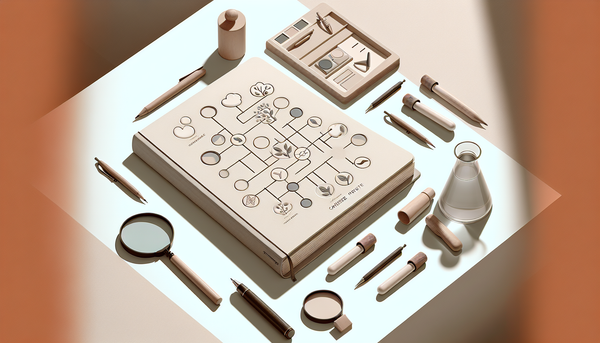Cold Showers: Trend or Health Hack?
The sound of alarm clocks across the world is increasingly followed by the sharp intake of breath that accompanies stepping into ice-cold water. What was once considered a form of torture or an unfortunate consequence of broken water heaters has transformed into one of the most debated wellness practices of our time. Cold showers have emerged from the shadows of extreme sports and ancient traditions to occupy a prominent place in modern health discourse, championed by everyone from biohacking enthusiasts to mainstream wellness influencers.
This dramatic shift raises a compelling question: are cold showers a legitimate health intervention backed by scientific evidence, or simply the latest wellness trend destined to fade like countless others before it? The answer lies somewhere between the extremes, rooted in both genuine physiological mechanisms and the powerful influence of social media-driven health culture.
As millions of people worldwide experiment with incorporating cold exposure into their morning habits and wellness routines, understanding the science behind cold showers benefits becomes increasingly important. From immune system activation to mental health improvements, the potential advantages of deliberate cold exposure extend far beyond the initial shock to your system.
The Science of Cold Exposure
The human body's response to cold water immersion triggers a cascade of physiological changes that researchers have been studying for decades. When exposed to cold temperatures, our bodies activate ancient survival mechanisms that may offer unexpected benefits in our modern, temperature-controlled world. These responses involve multiple systems working in concert, from our cardiovascular network to our immune defenses.
The foundation of cold water therapy lies in hormesis—the principle that mild stressors can strengthen biological systems when applied appropriately. Cold exposure acts as a controlled stressor that prompts adaptive responses, potentially improving our resilience to various forms of physical and mental stress encountered in daily life.
Immune System Activation
Research conducted by Dutch scientist Wim Hof and his team at Radboud University Medical Center revealed fascinating insights into cold exposure's effects on immune function. Study participants who practiced cold water immersion combined with breathing techniques showed increased production of adrenaline and cortisol, hormones that can suppress inflammatory responses.
A pivotal 2014 study published in the Proceedings of the National Academy of Sciences demonstrated that trained individuals could voluntarily activate their sympathetic nervous system and attenuate their immune response when exposed to bacterial endotoxins. Participants who practiced cold exposure techniques showed significantly reduced flu-like symptoms compared to the control group, suggesting enhanced immune regulation.
The mechanism appears to involve the activation of brown adipose tissue (brown fat), which generates heat through metabolic processes. This activation stimulates the production of norepinephrine, a neurotransmitter that plays a crucial role in immune system modulation. Regular cold exposure may also increase the number and activity of white blood cells, particularly natural killer cells that help defend against infections and potentially even cancer cells.
Additional research from the Czech Republic found that cold water swimming increased the concentration of several immune system components, including white blood cells, granulocytes, and lymphocytes. These findings suggest that regular cold exposure might help reduce the frequency and severity of upper respiratory infections, though more long-term studies are needed to confirm these effects.
Mental Health Impacts
The psychological benefits of cold water exposure may be among its most significant advantages. When the body encounters cold water, it triggers the release of several neurotransmitters and hormones that directly impact mood and mental state. The sharp temperature change activates the sympathetic nervous system, leading to increased production of norepinephrine, dopamine, and endorphins—chemicals often referred to as the body's natural antidepressants.
A study published in Medical Hypotheses proposed that cold water swimming could act as a natural antidepressant treatment. The research suggests that the stress of cold water triggers the release of beta-endorphins and noradrenaline in the brain, creating a natural high that can last for hours after the cold exposure ends. This neurochemical response may explain why many cold shower enthusiasts report feelings of euphoria and increased energy following their morning routine.
The mental health benefits extend beyond immediate mood enhancement. Regular cold exposure appears to increase stress resilience by training the nervous system to better handle acute stressors. This adaptation may translate into improved ability to cope with psychological stress in daily life. Some researchers theorize that the practice of voluntarily subjecting oneself to an uncomfortable but safe stimulus builds mental toughness and self-efficacy.
Furthermore, the meditative aspect of cold exposure cannot be overlooked. The intense focus required to breathe calmly and remain present during cold water immersion shares similarities with mindfulness practices. This forced presence may contribute to reduced anxiety and improved emotional regulation over time.
Physical Recovery Benefits
Cold water therapy has long been utilized in athletic circles for its recovery benefits, and scientific research supports several of these applications. The primary mechanism involves vasoconstriction followed by vasodilation—the narrowing and subsequent widening of blood vessels in response to temperature changes.
When exposed to cold water, blood vessels constrict, reducing blood flow to the extremities and potentially limiting inflammatory responses in tissues. As the body rewarms, vasodilation occurs, flooding tissues with fresh, oxygenated blood. This cycling process may help remove metabolic waste products from muscles while delivering nutrients needed for repair and recovery.
A systematic review published in the British Journal of Sports Medicine analyzed the effects of cold water immersion on recovery from exercise. The review found that cold water immersion was superior to passive recovery for reducing muscle soreness and improving recovery of muscle power. The optimal temperature range appeared to be between 50-59°F (10-15°C) for 10-15 minutes.
Cold exposure also stimulates the production of cold shock proteins, particularly RNA-binding motif protein 3 (RBM3). These proteins help protect cells from stress and may contribute to improved muscle recovery and adaptation to training. Some research suggests that cold shock proteins might even have neuroprotective effects, potentially supporting brain health and cognitive function.
The anti-inflammatory effects of cold exposure may extend beyond exercise recovery to general inflammation reduction. Chronic low-grade inflammation is associated with numerous health conditions, from cardiovascular disease to autoimmune disorders. Regular cold exposure might help modulate inflammatory responses, though more research is needed to establish definitive therapeutic protocols.
Cultural Phenomenon Analysis
The transformation of cold showers from an unpleasant necessity to a sought-after wellness practice represents a fascinating case study in how health trends emerge and spread in the digital age. This shift reflects broader changes in how people approach health optimization, moving beyond traditional medical interventions toward self-directed biohacking and performance enhancement strategies.
Understanding the cultural forces behind cold shower popularity provides insight into modern wellness psychology and the factors that drive health behavior adoption. The phenomenon demonstrates how ancient practices can be repackaged and popularized through contemporary channels, creating new traditions around old wisdom.
Social Media Influence
The rise of cold showers as a mainstream wellness practice is inseparable from the influence of social media personalities and biohacking communities. Figures like Wim Hof, Tony Robbins, and numerous fitness influencers have leveraged platforms like Instagram, YouTube, and TikTok to share their cold exposure experiences, creating a viral effect that has reached millions of viewers worldwide.
The visual nature of social media content particularly suits cold shower challenges, with dramatic reactions and visible breath clouds creating compelling, shareable moments. Hashtags like #coldshowerchallenge and #wimhofmethod have generated thousands of posts, creating a sense of community among practitioners and encouraging newcomers to try the practice.
The biohacking movement has embraced cold exposure as a core tenet, positioning it alongside other optimization strategies like intermittent fasting, red light therapy, and nootropics. This community-driven approach has created extensive online resources, from detailed protocols to tracking apps, making the practice more accessible and systematized than ever before.
Celebrity endorsements have also played a significant role in mainstream adoption. When high-profile athletes, actors, and entrepreneurs publicly credit cold showers with improving their performance and well-being, it lends credibility to the practice and motivates fans to experiment with similar routines.
The democratizing effect of social media has allowed everyday practitioners to share their experiences and results, creating authentic testimonials that often carry more weight than traditional marketing. This peer-to-peer influence has been crucial in overcoming the initial barrier of deliberately subjecting oneself to discomfort.
Morning Routine Integration
Cold showers have found a natural home within the growing trend of intentional morning routines. The practice aligns perfectly with the philosophy of starting each day with challenging, beneficial activities that set a



